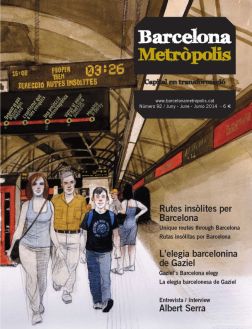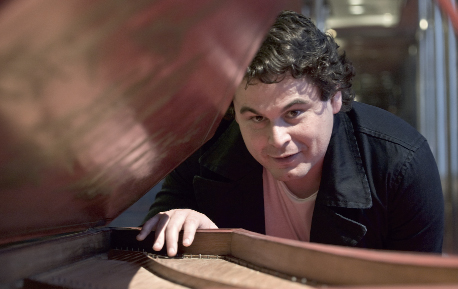Joan Bagés calls himself a sound artist, a concept that, he believes, more fully reflects the task of contemporary music creators, as he understands his work to be a cross-cutting, interdisciplinary project, on a par with the concept of a visual artist and far from the work of the composer who practised an artisan craft.
Bagés, who studied in Barcelona and Paris and whose music has been heard in various corners of Europe and America, makes sound and silence interact with the visual and technological revolution as a means of expanding the range of composition tools. His music is considered to be holophonic, a concept that aims to embody a global texture and includes performance tools that work together to create a series of relationships, encompassing visual and plastic arts, installations, dance, video, electro-acoustic and acoustic music, with or without microphones. Lately he has become interested in cultivating a cutting-edge sound phenomenon, acousmatic music, a refined version of electro-acoustic music in which the performance element turns the artist into a director who, from his sound desk, controls the dynamics of the various, carefully arranged speakers.
To the extent that we are unable to control our hearing in the way we can control our vision by closing our eyes, the sensations we perceive in this music often demand respect because we cannot identify their source. It is for this reason that Bagés believes the great sound revolution of recent decades has had an impact on the way we listen. In acousmatics, the creator works with a juxtaposition of elements so that we are constantly being surprised by the sounds and any expectations we may have about what we’re going to hear next can be thwarted, as the rules have dissolved, leaving room for multiple textural and musical possibilities and meta-musical morphologies that leave the listener feeling a certain degree of discomfort.
Electro-acoustic music represents a compositional revolution that enables the artist to instantly hear the results of their work and to interact with it, without having to pass through the sieve of time it takes for an instrumentalist to illustrate it. So the end result is already known at the moment of creation because it creates a feedback between action and perception. A process that involves all the elements of fast culture – the constant change in textures alludes to zapping, for example – and, beyond this, the loss of auditory references enables us to pick out the pulse of a global ideological crisis.





Tot un referent europeu de música electroacústica.